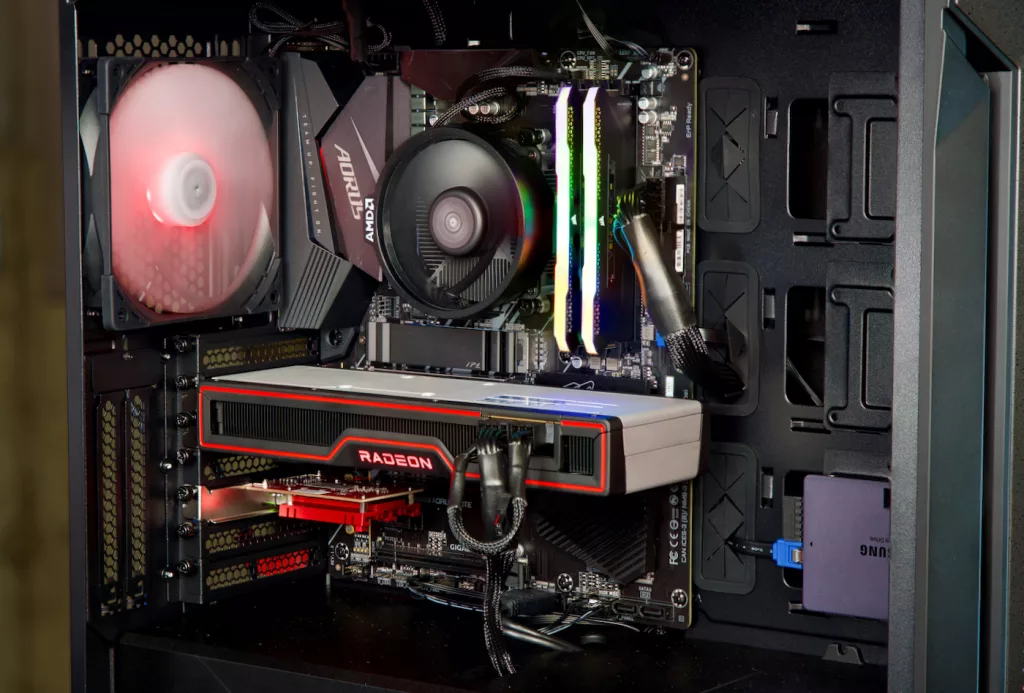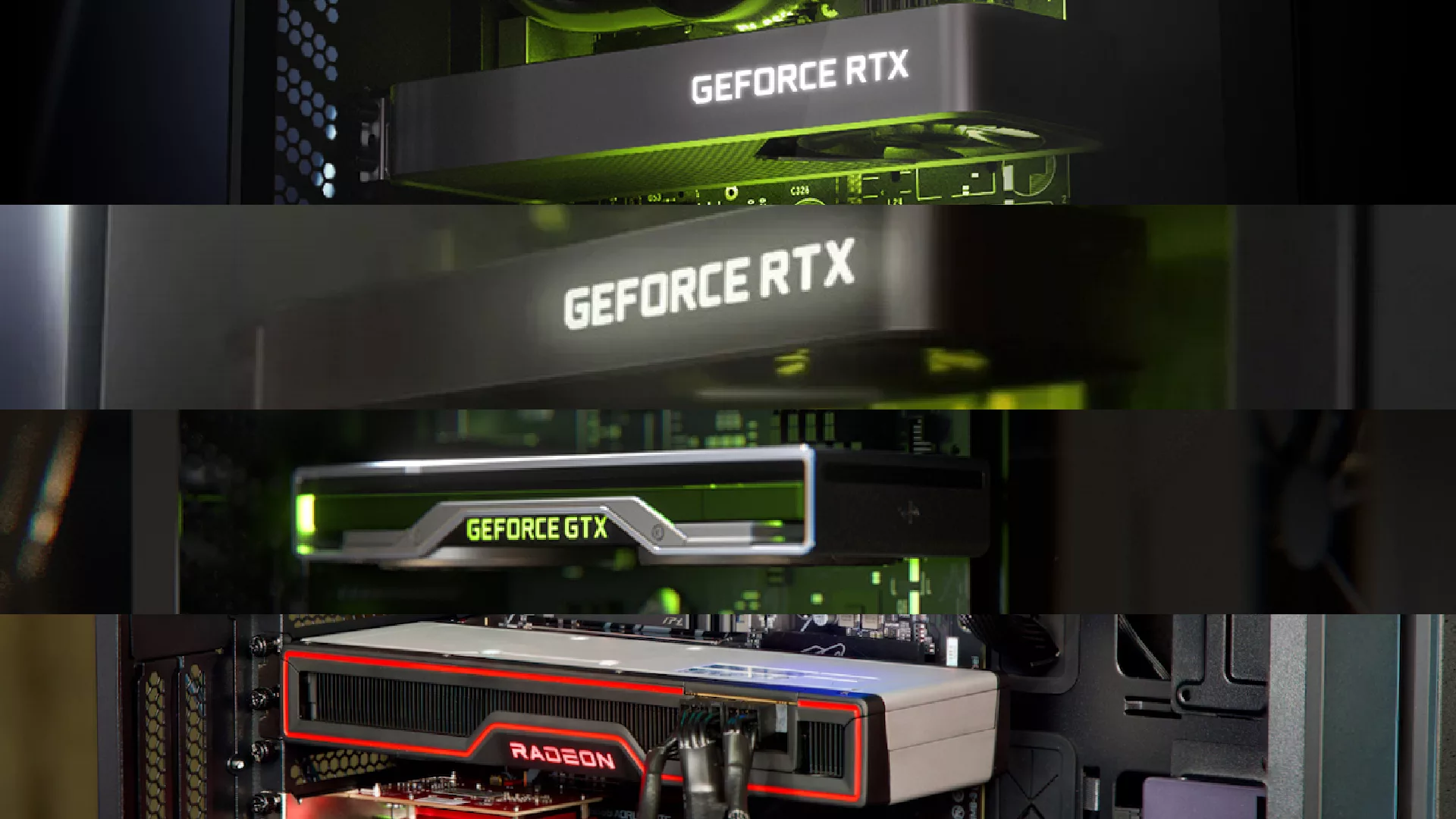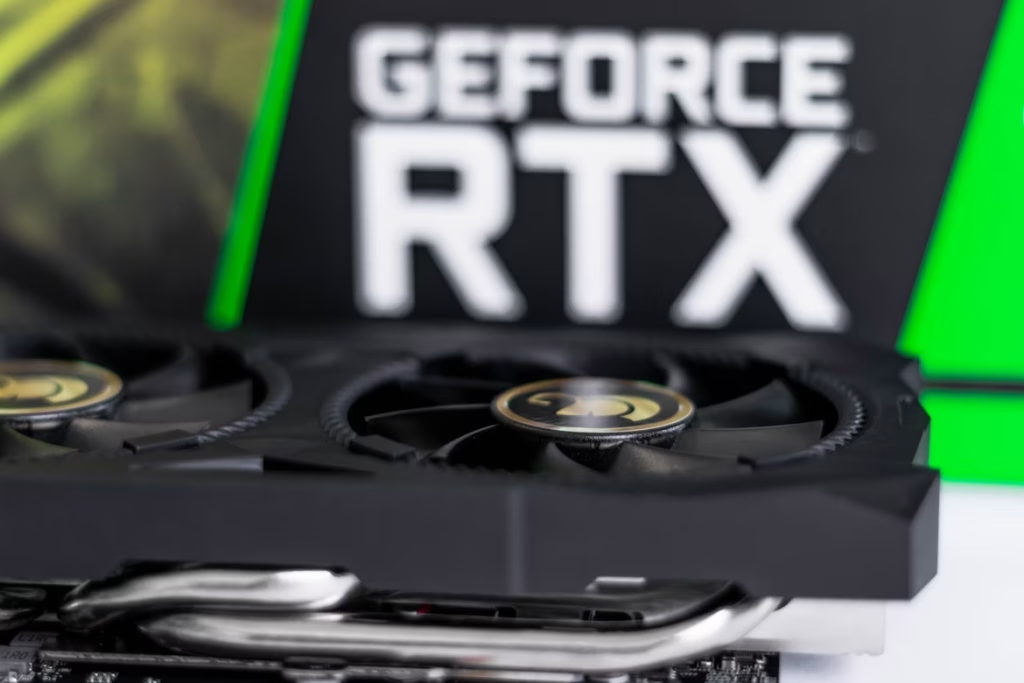The four under-$400 GPUs we’ve chosen include the Nvidia RTX 3060, Nvidia RTX 4060, Nvidia GTX 1660 Super, and AMD RX 6700 XT. Between these options, you will find an ideal GPU for any use case, type of PC, and type of game. We’ll discuss everything from the key specs to power usage and gamers’ experience.
Note that you can get higher-end models sometimes within $400 such as the AMD RX 6800 or the Nvidia RTX 4060 Ti, but these are not always at this price point. Sparkle’s Intel Arc A770 Titan OC Edition (16GB) is also available in this bracket but hasn’t been tested extensively so we’re going to skip Intel completely for now.
Alright, let’s get right into it.

Nvidia RTX 3060 ($300-400)

- 3584 CUDA Cores
- 1.32 GHz Base
- 1.78 GHz Boost
- 12GB GDDR6
- 170W
The RTX 3060 has had close to three years of market time. It’s sufficient time to see all problems and that’s why this is recommendation #1 and not the RTX 4060. The RTX 3060 is a solid GPU, though it has had its ups and downs (low FPS issues mainly). Overall, you can’t go wrong with this option.
- Excellent ray tracing performance across AAA titles with 28 ray tracing cores.
- It’s a decent card for 4K gaming with high or ultra settings, depending on the game.
- A good value-for-money purchase, second only to the RTX 3080 in cost-effectiveness through the entire RTX 30 series lineup.
- Highly recommended for entry-level and mid-range gaming PC builds.
Nvidia RTX 4060 ($300-350)

- 3072 CUDA Cores
- 1.83 GHz Base
- 2.46 GHz Boost
- 8GB GDDR6
- 115W
By terminology, the RTX 4060 is the successor to the RTX 3060 – but the gains are small. It has roughly 18% better performance at 1080p and 16% better at 1440p according to PC Gamer. That’s not spectacular but not bad either if you’re getting both at comparable prices. The problem is the lower VRAM compared to the RTX 3060, which is mainly the reason for such a small gain. Bigger games today require a larger VRAM, especially if you want to play the latest and the greatest by AAA game studios, such as the upcoming GTA 6. The lower total graphics power makes a good option, nevertheless, and it can run on a 550W PSY with ease, making it a good 40-series card that won’t require you to upgrade your power supply.
- It’s a pretty powerful graphics card overall. The 40-series is the latest from Nvidia, and the RTX 4060 simply doesn’t disappoint no matter what you throw at it.
- Excellent 4K and ray-tracing performance. With DLSS, you can expect high FPS even on ultra settings in most high-end games with RT on.
- Great performance-per-watt ratio. In fact, it’s one of the best GPUs on the market right now for power efficiency.
- Not the “best value” Nvidia 60 card in the lineup, which is a disappointment.
Nvidia GTX 1660 Super ($190-250)

- 1408 CUDA Cores
- 1.53 GHz Base
- 1.78 GHz Boost
- 6GB GDDR6
- 125W
Looking for a more entry-level PC without spending big bucks? The GTX 1660 Super will fit the bill really well. It’s a solid 1080p@60 card and has a great balance between power requirement, performance, and market reputation. It’s a well-built card from Nvidia that’s been serving gamers for over four years now with generally good market reception. If you’re not after the shiniest features in the world of modern PC gaming, the GTX 1660 Super will cut it gracefully for you.
- All GTX series have no hardware-accelerated ray tracing cores or AI cores. This means no ray tracing in games and no DLSS support. You can use AMD’s FSR for a substantial boost to your FPS if you’re playing demanding games, however.
- It’s a great choice for entry-level gaming. This card is recommended for gamers who don’t play the most cutting-edge triple-A games and don’t need ray tracing in their games while saving money for the rest of the hardware.
- If you’re not going to purchase a 30-series or 40-series card, then it makes more sense to buy a GTX 16-series one like this one, instead of the middle ground of a 20-series card.
AMD RX 6700 XT ($300-400)

- 2.32 GHz Base
- 2.58 GHz Boost
- 12GB
- 230W
AMD has some great options in the under-$400 bracket. The RX 6600 is, for example, better than Nvidia RTX 3060. The RX 6700 XT is significantly better than that and actually goes head-to-head with the RTX 3070, RTX 4060, RTX 3060 Ti, and even the RTX 4060 Ti. Overall, it’s a good purchase if you’re not locked into the Nvidia team. In fact, this would be our #1 pick if it wasn’t for Nvidia’s higher market share and better reputation.
- Compared to the RTX 4060, the AMD RX 6700 XT performs 20-22% better. Even at 4K, the lead is pretty close to that at ~18% according to Technical City and countless user experiences.
- One of the best cards for 1080p and 1440p gaming. Also great at 4K.
- Unparalleled value for money in the $300-400 price range across all PC graphics cards.
- Better performance than almost all competitors. The gains only stop at RTX 3080 – which is simply the best value proposition for games, though it’s out of this price range (can cost anywhere from $500 to $1200).
- The only downside is that it draws more power and usually runs hotter than the other cards mentioned here.
Use Case & Game Type Considerations
Assuming saving money is the first priority, here are the best cards for each scenario:
- Entry-level, non-AAA gaming mostly: Nvidia GTX 1660 Super
- Mid-range gaming, decent ray tracing performance: AMD RX 6700 XT
- Highest possible FPS with good 1440p/4K gaming, ray tracing on: Nvidia RTX 3060 (thanks to DLSS)
- Casual, indie, small, or less taxing games: Nvidia GTX 1660 Super
- AAA games from 4+ years ago: AMD RX 6700 XT
The RTX 4060 is good if you don’t mind spending extra for a marginal improvement.
Note that none of these cards can run modern triple-A games at high FPS with ray tracing on, even with DLSS or FSR, at maximum settings and 4K. At best, these are the best 1080p@60 cards, and if you’re not playing very taxing games or don’t need the most cutting-edge graphics, excellent 1440p cards.





